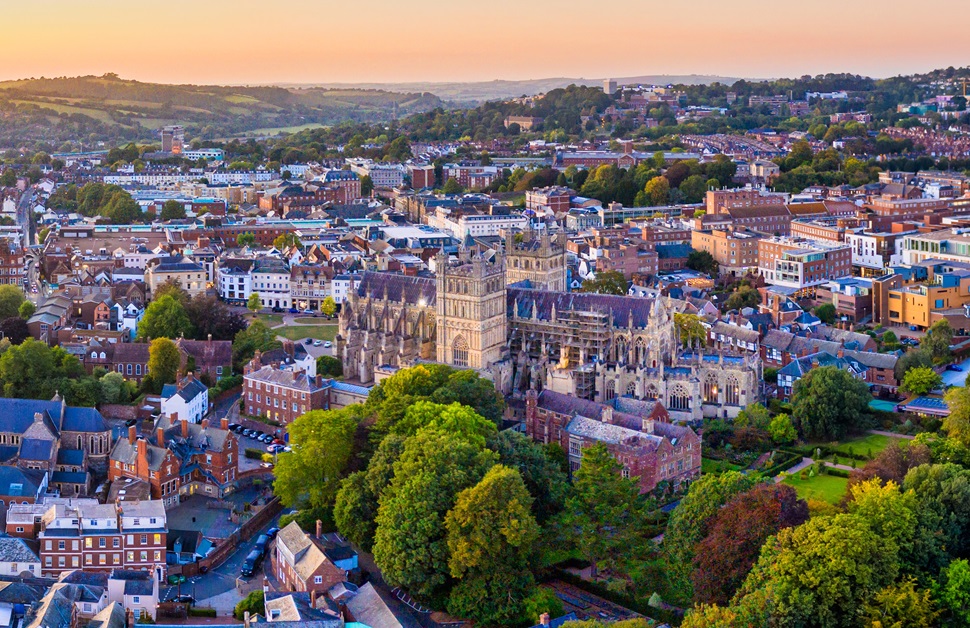Devon Trees and Wooded Qualities
Acting as the home to only minimal built-up urban areas, the county of Devon in South West England is known as being predominantly rural. Through the presence of hills, beaches and coastal areas, it is a location with all forms of countryside possible, and that also extends to trees throughout the county, patches of woodland and expansive forests.
Since the start of the 21st century, around 4.85 kilo hectares of woodland have been lost in Devon, leading to a decrease in tree cover of 4.9%. A scheme designed to help with the two-fold purposes of increasing the number of valuable trees in circulation and preventing the extinction of local plants was unveiled in January 2024, with the National Trust aiming to plant 100,000 new trees in North Devon.
A historic county, Devon is home to the oldest bakery, cinema and hotel. The largest settlement in Devon is Exeter with a population above 120,000, followed by a substantial gap that sees Exmouth, Barnstaple and Newton Abbot all possess populations of around 30,000. Trees can appear in any location, and as such, a tree survey will be needed to avoid any issues on a development site that could hinder obtaining a successful planning application.

Existing Tree Protections
All local authorities across Devon are required to show consideration for tree care, especially when it comes to trees under ongoing protective measures. The two primary categories are Tree Preservation Orders (TPOs) and conservation areas, and if at any point a tree on a site is given either of these parameters, direct consent will be needed from the local council before any harmful building works take place.
Initiating a conservation area or a Tree Preservation Order (TPO) to defend a tree will trigger similar results, as both options are fairly similar. That said, it is common for a TPO to apply to individual trees that are specifically chosen for protection, whereas a conservation area will usually apply to all trees within a given zone. Either way, any trees affected by the protections will cause extra frustration to a developer staging a land or property development.
Councils in the Local Vicinity
- Devon County Council
- East Devon District Council
- Exeter City Council
- Mid Devon District Council
- North Devon District Council
- South Hams District Council
- Teignbridge District Council
- Torridge District Council
- West Devon Borough Council
Analysing Trees
Planning projects often benefit the most from a BS5837 tree survey – an inspection of all trees that uncovers effective and appropriate next steps for each of them. A tree consultant will hand a grading to each tree based on condition and value, and using the grading and the plans of the development, they will know whether they need to be retained, relocated or destroyed.
Retention of worthwhile trees will always act as the priority outcome, but if this is not possible, affected trees will be relocated on-site or off-site, or destroyed and compensated for with the planting of new trees. A mitigation hierarchy will decide on the best solutions for the trees, and the plans of the development may be altered if it means allowing high-value trees to remain in place.
Tree reports detailing the necessary tree work, instructions for each tree and recommendations for further tree surveys will then be constructed based on the results of the assessment. A tree survey report will also reference any other steps that will support the developer’s pursuit of obtaining successful planning applications from the local planning authority.
Contact Our Expert Team
Our focus is on addressing the specific needs of our clients whenever it comes to tree-related issues. Working with developers, homeowners, architects and even tree owners, our tree consultancy identifies the quickest and most effective method of moving forward, satisfying any planning requirements and claiming planning consent from your local authority.
From a BS5837 tree survey to a quantified tree risk assessment and every other arboricultural inspection in between, our team can jump to the needs of all clients. You can claim a free quote by calling us, emailing us or by completing a quote form on our website. With details of your site and project, we can price up the cost of tree surveys for your development, and once our tree consultancy has undertaken the tree survey and created the corresponding tree reports, they will be ready to be submitted to your local council.